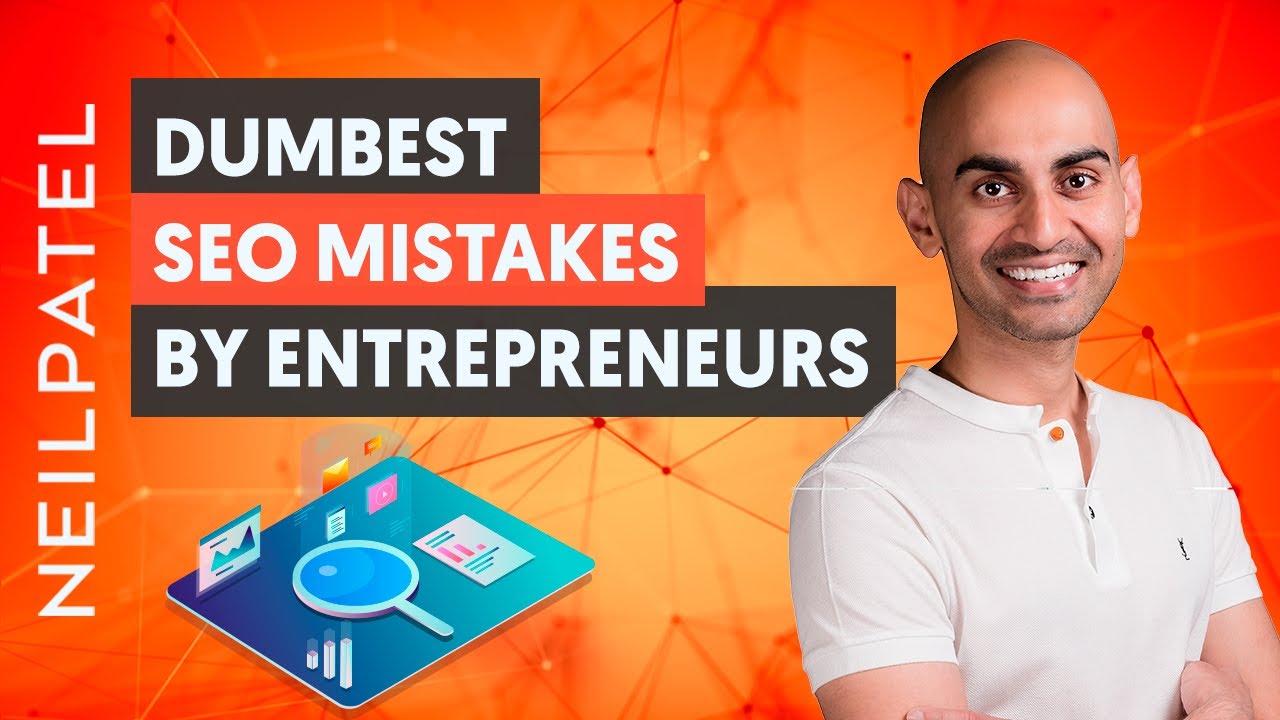5 Dumbest Mistakes Entrepreneurs Make With Their SEO | Entrepreneurs are great at solving problems and giving life to ideas. But when it comes to SEO, I’ve seen them make some of the biggest mistakes that cost them hundreds, even if not, thousands of dollars and sometimes even millions of dollars. Some of these guys have gone on to create businesses that are succeeded and are big brands and they still continually make these mistakes. Today I’m going to breakdown the five dumbest mistakes entrepreneurs make with their SEO.
RESOURCES & LINKS:
____________________________________________
Ubersuggest: https://neilpatel.com/ubersuggest/
5 Beginner SEO Mistakes That Are Ruining Your Website Traffic And What You Should Do Instead : https://youtu.be/yX20m5mprCE
____________________________________________
So let’s dive right into the five biggest mistakes.
Mistake number one. Optimizing for the wrong keywords and trying to rank previously competitive keywords early on.
This is a mistake that a lot of new businesses make early on and its an issue that could be avoided really easily. Because, here’s the thing. If a keyword is super competitive, then chances are you’re not going to rank for it. Or if a keyword won’t convert well, ranking for it isn’t going to drive you any sales. And it’s not hard to solve this problem.
All you have to do is go to Ubersuggest. Type in your competitor URL. Click on Top Pages, it will show you all their top pages and then I want you to click on view all underestimated visits.
This will show you all the keywords that your competition is going after. These keywords are more likely to convert into sales than just picking random keywords.
The next thing I want you to do is to go to Ubersuggest once you have a list of keywords. Type them in and it will give you all these ideas and other comparison words, prepositions and other ideas that you can go after.
But, here’s the thing. When you’re doing this, you can’t just go after any random keyword. You need to look for keywords that have a high CPC because if someone has a, is paying a lot of money to advertise on it, you can bet that it converts highly into sales.
The other thing you need to look for is a low SD. A low SD stands for SEO difficulty. So the lower the numbers such a 40’s, 30’s, or 20’s is great. The moment you get above 50 for e-site just going to be harder to write. Look for those two things, plus high volume. So the higher the volume, the higher the CPC and the lower the SD or SEO difficulty, the better that keyword is. Those are the ones you want to go after. And when you do that, you’re more likely to get some sales.
The second biggest mistake that I see people making is their not using analytics or running regular website audits.
This is one of the big mistakes that companies make all the time.
What you need to do is look at the core metrics that are driving your sales and focus on them. And, in addition to that, you need to be running regular site audits. And you can also do this within the site audit report within Ubersuggest for free. It will tell you what’s wrong and as you fix them, you should notice more conversions and sales within your analytics.
The third big mistake. Overlooking page titles and meta descriptions.
Look, if one site ranks number one Google and another site ranks number two but everyone starts clicking the number two listing what do you think that tells Google?
So think about the copy. Persuasive copy. Start looking at the paid ads. Typically, the people at the top aren’t just paying the most but they’re getting a lot of clicks because that helps Google make a lot more money and that will help you do well.
The fourth big mistake. Not using anchor tags properly.
If you’re going after a keyword like online marketing all your anchor tags shouldn’t say online marketing when other sites link to you. It needs to be natural. Sometimes I’m writing a blog post and I’m linking to my posts on SEO and I’ll say, Hey, if you want to rank higher in Google, follow these tips. You’ll notice that I didn’t use the word SEO right there.
And sometimes, when I am talking about SEO, I’m linking to my SEO article, I’ll say, Hey, you need to check out these SEO tips. And I’ll link the word SEO tips to that article.
The fifth mistake. Building content for algorithms and not your audience.
It’s not about your word count. It’s not about stuffing keywords in your article. It’s about doing what’s best for a user. And if you write content for them, in the long run, you’ll do really well.
► If you need help growing your business check out my ad agency Neil Patel Digital @ https://neilpateldigital.com/
►Subscribe: https://goo.gl/ScRTwc to learn more secret SEO tips.
►Find me on Facebook: https://www.facebook.com/neilkpatel/
►On Instagram: https://instagram.com/neilpatel/
#SEO #NeilPatel #Entrepreneurship



 https://youtu.be/olKa_UzmDSE
https://youtu.be/olKa_UzmDSE 



